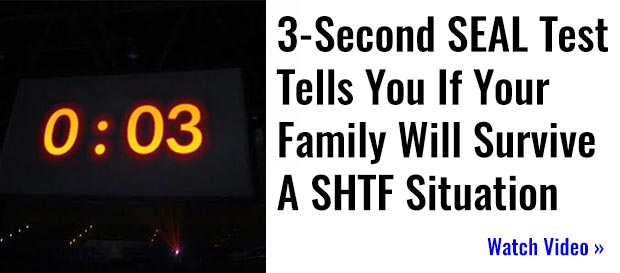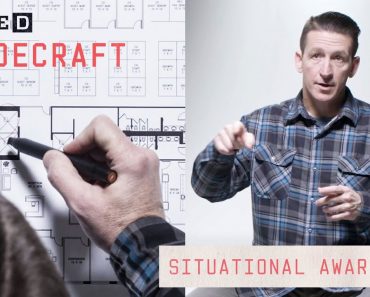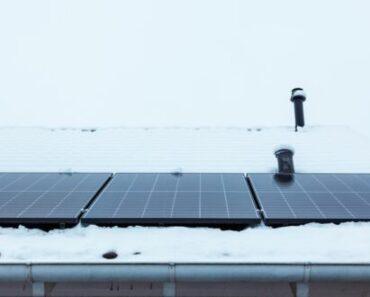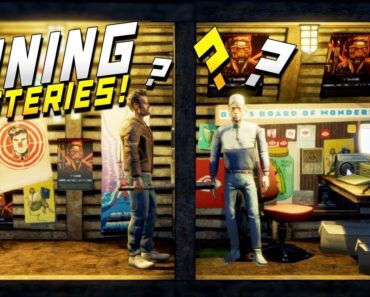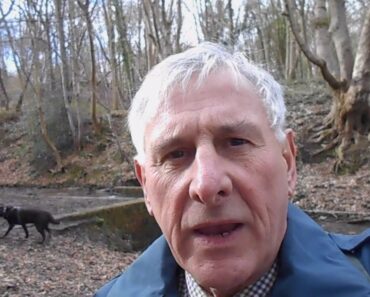- Signal gear must be ready for use in an instant, not buried in your pack, back at camp, or in your vehicle.
- Not all pyrotechnic signals are designed for effectiveness on a boat or in the water. Select maritime signals for use on or over water.
- Carry an unmistakable distress signal. While flashlights or mirror flashes may or not be distress signals, everybody knows that red areal flares mean that someone is in trouble.
- When pyrotechnic flares are carried, carry enough for them to be effective. Depending on the mode of transport, this should be a minimum of 8-12 flares, not the packs of 3-4 sold in stores.
Movies, TV shows, and advertisements for PLBs (Personal Locator Beacons) can give outdoors people unrealistic expectations. An actor presses the button, and seconds later, a helicopter lands meters away and flies the survivors to safety. Ads and shows that portray rescue in this manner create a dangerously false sense of security.
Unfortunately, there aren’t any search & rescue resources across much of the planet to come to get you. Even if you have effective communications, you must keep yourself and others in your party alive until rescue, which could be 12-36 hours away. Once they arrive in the area, rescuers need you to signal your location. This signal needs to be effective from a mile or more away, and that’s where the term “last mile signaling” comes from.
Types of Signals
There are many types of last-mile signals. I’ll cover several methods of interest to survivalists and outdoors people.
Pyrotechnic Emergency Flares

Red pyrotechnic flares see wide use for survival signaling. One reason is that they are unmistakable. If you are out driving, flying, boating, or hiking and you see a glint of light, a flashlight, a campfire, see someone waving, or hear a gunshot, that may be someone signaling for help, or it may not.
Unfortunately, the person you are attempting to signal may not know what to look for.
When I interviewed Salvador Alvarenga, who survived an astonishing 438 days adrift at sea, he told me that he came within visual range of container vessels several times, sometimes so close that crew fishing off the back waved back at him, but no one stopped. Salvador was not rescued but instead drifted some 7,000 miles or more, from Mexico to the Marshall Islands, eventually washing ashore on Tile Islet in Ebon Atoll.
Although he signaled with a mirror and waved a yellow sweatshirt at passing boats, the crew just waved back and maintained course and speed. I doubt anyone else could fully understand the depth of his frustration at his failed signal attempts. If Salvador’s employer had stored pyrotechnic flares in a watertight compartment of his vessel, I’m sure his ordeal would have been significantly shortened.
When you have the room, red parachute flares are brighter and have a longer hang time than smaller flares. White parachute flares can also illuminate a battlefield if your group or others you are operating with lack night vision equipment. Since they are standard military equipment, it is even possible to find MOLLE pouches for them.
Aerial flares should be fired at arm’s length, downwind, and aimed away from the face. If you’re already in enough of a pickle that you’re signaling for rescue, the last thing you need is to set your hair on fire with a rocket.
Once your areal flares are seen, guide rescuers to your location with handheld or ground flares. As demonstrated in the photo above, hand flares designed for use on boats have a handle designed to insulate your hand from the blaze. The compact MK8 hand flare (top & middle) in the photo is extendable to save space. As its name implies, the Orion flare/fire starter (bottom) is also an effective fire starter. I often carry a couple of these in winter if I need to start a fire and have lost my fine motor coordination due to hypothermia, making it pretty much impossible to operate equipment such as lighters, matches, or ferro rods.
Pyrotechnic Emergency Smoke Signals
Pyrotechnic smoke signals billow a large volume of orange smoke that is easily seen from a distance. If necessary, smoke signals can also be used to screen movement like smoke munitions to break contact with the enemy. Smoke signals heat up and shower sparks, so this should be considered when deciding where to deploy them. Like aerial flares, smoke signals should be deployed downwind, so the smoke doesn’t blow back on your position unless you’re screening, then smoke should be deployed upwind of the area you intend to screen.
Emergency Signal Mirrors
Signal mirrors come in many shapes, sizes, and materials and depend on sunlight instead of batteries or chemicals. Signal mirrors should be used to paint the horizon even if rescuers are not visible because light reflected from quality emergency signal mirrors can be seen at distances exceeding 30 miles. The longest distance a signal mirror has been used to signal rescuers that I am aware of is an incredible 105 miles!
The dog tag mirror on the bottom right is steel. It looks rough because I coated it with a non-toxic rust-preventative since I was carrying it in a small survival tin. To its right is a thin, 1.5″ x 2″ steel mirror. The one in the middle on the left is laminated glass. The one in the center with the white backing is a thin, flexible card to carry with a Fresnel lens in a wallet or PSK (Pocket Survival Kit). The rest are all acrylic. You’ll notice that some signal mirrors have what looks like a wire grid in the aiming hole. This is a retroreflective aiming aid that enables the mirror to be used one-handed, which is helpful in case of injury. This is a desirable feature. A bright spot will appear in the grid. Simply “paint” that bright spot over your target in series of three flashes. Which mirror is the best? In my opinion, that’s somewhat subjective as it depends on kit size, environment, and more.
In general, essential features are retroreflective aiming, good water resistance, high reflectivity, and impact resistance. You may also want a floating mirror, but this drawback is easily overcome by dummy cording the mirror. Many StarFlash Ultra mirrors (top right) by Ultimate Survival Technologies are defective. They may lose reflectivity when immersed in water, which is nigh-unforgivable since both of mine came in military-issue survival kits. However, the yellow StarFlash Signal Mirror (middle right) by the same company does not exhibit this defect. The Rescue Flash Signal Mirror (bottom right) is solid, but I prefer laminated glass signal mirrors. Some instructors and writers disagree, citing the fact that glass is breakable. Still, I have carried mine daily for years, protected only by my homemade felt-lined leather case, often sitting on it and not been able to break it. Moreover, commercial acrylic mirrors simply don’t have the reflectivity of glass. Glass mirror are the standard by which other mirrors are judged and signal around 40% father than a good acrylic mirror. On the downside, glass mirrors are slightly heavier and thicker than acrylic mirrors.
I have only been able to find bulky, padded, nylon mirror cases for my 2″ x 3″ military glass signal mirror, so I made this swing-out, felt-lined, leather mirror case for my own EDC. I also added a sheet of Reflexite retroreflective adhesive tape for night signaling, which can also be cut into small squares to mark a trail.
Signal Panels
A proper signal panel has a different contrasting color on each side. The user can visually communicate predetermined messages that correspond to patterns into which the signal panel is folded. If you intend to use a signal panel for its intended purpose, you will want a VS-17 or Battle Systems signal panel in a color pattern that contrasts with your surroundings.
To be worth including in a survival kit, a piece of equipment should be multi-functional. To signal for rescue, emergency bivvies, blankets, or ponchos in “signal orange” or “emergency orange” are visible from long distances when staked or rigged in the open. In a pinch, the reflective side of a subdued emergency blanket can also be used to attract attention. To leverage a panel or emergency blanket, suspending it above the ground adds shadow and contrast. Rigging a section as a flag can add motion, which is easily picked up on by the human eye. Lastly, using three such panels or flags in a line or at the points of a triangle confirms that he or she is indeed looking at a distress signal to a knowledgeable spotter.
Retroreflective Emergency Signals & Trail Marking Materials
Retroreflective materials reflect light from flashlights, headlights, or spotlights just like a traffic stop sign, making effective night signals. Even a small (1″ square) of retroreflective tape makes a highly effective signal or trail marker, so you might consider adding a few strips of the retroreflective adhesive tape to your PSK so you can cut it up into squares to create trail marking that is visible day or night. 3M Cyflect is a retroreflective material (top-right slightly yellow) that also glows in the dark when exposed to sunlight or artificial light. A less expensive option is to use survey marking tape.
IR-reflective materials reflect infrared light from IR illuminators, making IFF (Identification Friend or Foe) tabs visible in active night vision equipment. Both retroreflective and IR-reflective materials can be formed into buttons or attached to clothing or equipment. Such buttons or tabs also improve the visibility of pedestrians at night.
Lights & Strobes
LED flashlights and strobes come in a variety of shapes and sizes to fit any survival kit. Either signaling SOS (three short, followed by three long and then three short pulses of light) or using a LED model with an SOS strobe feature is more likely to be recognized as a distress signal. The Petzl STRIX IR (top left) features an IR strobe, and the IR finger light (bottom right) emits IR light visible in night vision equipment. Even more effective than a flashlight is a signal laser, which produces a wide beam that can be painted across vehicles, aircraft of the horizon in much the same fashion as a signal mirror.
Alkaline batteries sometimes rupture and leak when stored in flashlights long-term, so in applications where batteries must be kept in lights, lithium batteries are recommended. Lithium batteries are also lighter weight and are better suited the high-drain electronics such as powerful LEDs.
Chemical lights such as the Cylume SOS signal (middle, right) do not contain batteries and are instead powered by a chemical reaction. Chemical lights can be swung in a circular motion by a lanyard for emergency signaling use.
Whistles & Audible Signals
Whistles, air horns, firearms, car or boat horns can be effective audible signals. Pea-less whistles are preferred for survival signal use because they lack a moving pea that can bind, freeze in place, or decompose over time, such as the Army Issue whistle (top, left).
For use in PSKs, I prefer the Fox 40 Micro (yellow whistle at bottom right) or the ACME Tornado (black with OD lanyard, middle row, second from left). As for loudness, the Storm (top right) is the loudest by far, but it is too bulky for a PSK, so I use it for emergency response.
It is so loud that it should only be used with hearing protection. The Wind Storm (top, middle) is not quite as loud and slightly more reasonable. The Fox 40 (middle, far left) is an excellent and loud all-around whistle.
In general, audible signals are far more effective than yelling since the average person’s voice will go hoarse after just a few minutes of screaming. When trying to signal aircraft with fossil fuel engines, focus on visual signals instead of wasting energy yelling because they cannot hear you over the engine noise and through headsets.
Signal Fires
In mountainous, hilly, forest, and jungle environments, signal fires are a last-ditch survival signal. This reason is that even a well-built fire lay built on a tripod and lit with a lighter takes long enough to become fully engulfed that a passing vehicle, boat, or plane may be out of sight before it is lit. Then consider that you may need to light three such fires 30m or more apart to distinguish them as an emergency signal. By the time a survivor runs the circuit, lighting the fires, the opportunity may have passed. When signal fires are used, keep a small fire going with torches nearby and deploy runners to each fire, if available. When signaling against a dark or green background, burn evergreen boughs or other green vegetation that gives off white smoke once the fire is hot enough. Test local vegetation ahead of time, you may only get one chance. Produce black smoke against light backgrounds by burning motor oil or rubber tires. Black smoke is generally more effective.
Environment-specific Signaling
Some environments present particular challenges to last-mile signaling.
Ground to Air Signals
Since we are talking about last-mile signals here, we’re mainly concerned with contacting and communicating with rescuers already in the area. You’ll notice in the picture of the mirrors that a mirror or two and a vinyl mirror case have a list of ground-to-air symbols printed on them. The instructions in your PSK should also contain this information and other potentially lifesaving information that may be hard to remember under the stress of an emergency. Symbols should be created on the ground with lines 2′ wide and symbols approximately 10′ high. Alternately, body symbols or semaphore flags can be used.
Maritime & Over-water Signals
Before heading out on or over the water, be sure that any pyrotechnic signals carried are compatible with the environment. The MK8 maritime smoke pot in the photo (top left) is ignited with a pull ring and designed to be tossed in the water where it will float and emit smoke since it would be dangerous to keep a smoke pot aboard a boat or to try to hold in hand. The MK6 and MK8 handheld flares (center) are designed to be held without burning you or setting your boat or raft ablaze. The Orion red pen flare (bottom) is suitable for carrying in a vest, PSK or Go Bag or for use in small craft such as kayaks and personal watercraft. The red MK3 Parachute Flare (top, right) is suitable for watercraft with room for a dozen or more flares of this size. Carry enough flares to signal effectively. Carry a minimum of 8-12 flares.
Signaling from Under a Forest or Jungle Canopy
Canopied jungle and forest environments pose real problems to search & rescue operations. If you can find a spot with a view of the horizon or the sky, a passing vehicle, boat, or aircraft may be visible for a few seconds at most, requiring luck, precision timing, or both. Forest canopies dissipate the smoke, absorb sound and block light and pyrotechnics. Some last-mile signaling for use in canopied environments makes use of brightly colored, radar-reflective lighter-than-air balloons. Balloons are used to hoist strobes, radio, GPS and satellite antennas up above the forest or jungle canopy where they are effective.
Signaling in Snow
Whatever background you are signaling against, the signal must create contrast, color that stands out, movement, or all three. A multi-use signal that is tiny enough to carry in even the smallest PSK is Potassium Permanganate.
In the above photo, I have mixed three concentrations of KMnO4 in water. An amount of this chemical small enough to fit on the head of a tack is enough to treat dozens of gallons of drinking water or to create several liters of bright purple solution for signaling on snow. Put the solution in a water bladder with a squirt cap or place it in a plastic bag and make a small hole so you can develop just enough pressure to create large letters in the snow.
Keep in mind that potassium permanganate is a powerful oxidizer. Please don’t get it or any solution on your toenails or fingernails, or it will oxide them too. Concentrated solutions can burn the skin, and potassium permanganate is toxic in sufficiently large dosages. For more uses of potassium permanganate, look up one of my articles on pocket survival kits. There are many effective last-mile signal options, but they won’t do you any good unless you have them with you when you need them.
I hope that this article gives you some ideas for what to include in your survival kits distributed throughout your gear and vehicles, boats, or aircraft.













